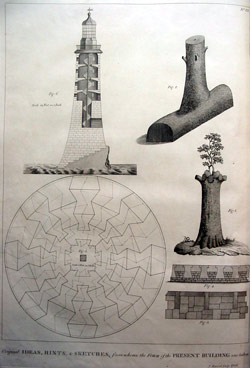Title: Geometry, Design and Materiality
John Smeaton, one of the first known civil engineers in history, was appointed by the Royal Society in the eighteenth century to rethink and redesign the Eddystone Lighthouse, part of one of the most important harbours in England, as the previous versions failed their purpose.
The previous structures had been built of wood and ballast, the idea behind this, being that timber would move under the wave action rather than oppose resistance to it. Smeaton, the first one to consider this an issue, decided to build his construction in stone, because he thought that the structure must not resist to the sea, but rather give way to it. When it comes to geometry and materiality he took inspiration from both the shape of an oak tree trunk and the interlocking stones of London pavements.
Smeaton went on to analyse the surface of the rock where the lighthouse was being built and instead of exploding a level surface, he used the already existing contours of the previous structures, and decided to construct his stonework into the existing rock. The tower above this surface was circular in section. This geometry was intended to offer as little resistance to the sea as possible and create a structural connection between the stormy sea and the lighthouse. The result was a guarantee in stability of the tower. The lower part of the lighthouse was solid, the upper one hollow with four rooms, on top of each other. The lamp inside included two chandeliers with 12 candles, embodied in an octagonal lamp.
The lighthouse was made entirely of interlocked stone, and it took two years of work under the very difficult weather conditions. Smeaton, was a pioneer in construction materials and engineering and he used a certain concrete, known as hydraulic lime, that set under water. The main ideas between his design, geometry and materiality are described in detail in his book. The pictures of elevations and sections below depict his inspiration, the concept and the design of Eddystone Lighthouse.
key words: Geometry, oak tree, hydraulic lime

